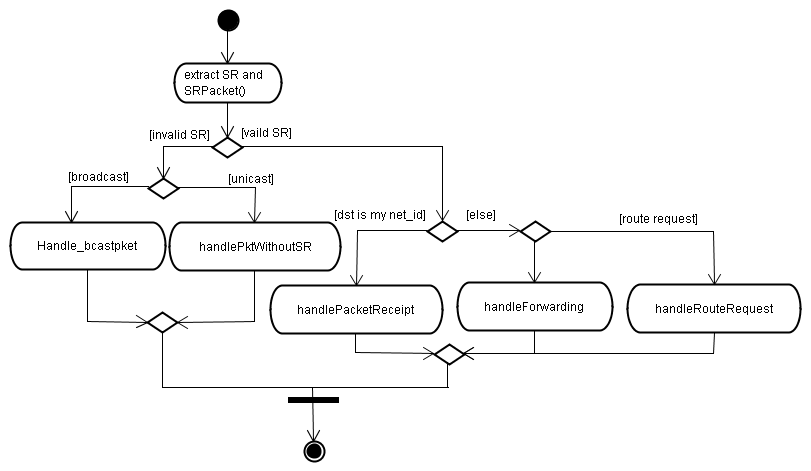
The route-reply, route-request messages need special handling routines written in the handlePacketReceipt() funciton. Note that if the RRequest message reached the destination, the receiptent should send a RReply message, this is done by a function named returnSrcRouteToRequestor(p) which is called in handlePacketReceipt(). Otherwise, if the route-request and route-err
- if it is a route-request and "not processed", sends back a route-reply, pkt "p" is forged in this function and returnSrcRouteToRequestor(p)
- if it is a route-reply, call functiuon acceptRouteReply(p);
Basically, this function has three branches:
- already processed, checked by function ignoreRouteRequestp(p).
- has a cached route, done by replyFromRouteCache(p), and "cached route" is enabled by the flag dsragent_reply_from_cache_on_propagating.
- append myself in route with p.route.appendToPath(net_id); and sendOutPacketWithRoute(p, false);
handleForwarding is dcallin "handleDefaultforwarding" for doing some simple operations for DSR rules. At last, the packet will be sent by sendOutPacketWithRoute
- cmn header's failure callback functon and data are set
- cmn header 's next hop is set to addr of next-hop in dsr header. address type are also set.
- move the pointer in SR header to the next (increase 1).